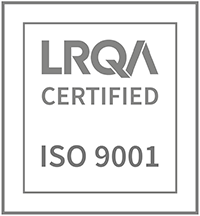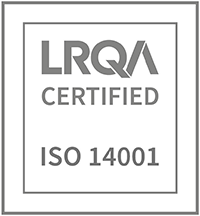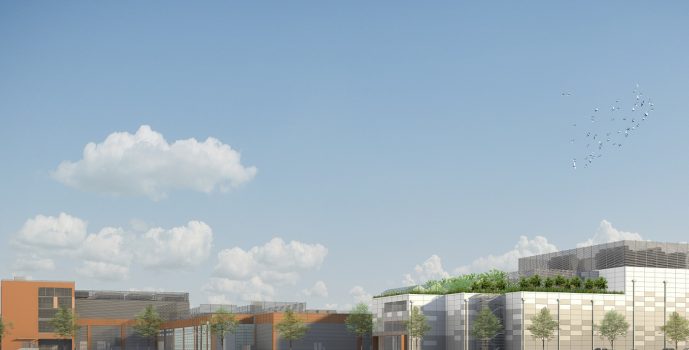It was great to see Equinix featuring on BFM Business last month, discussing the firm’s investment in French data centers – whilst showcasing one of our projects in the background.
It’s humbling to hear the company making clear its commitment to strengthening France’s data network – for the utilisation of 5G and cloud computing – and working hard to minimise climate impact using renewable energy, heat recovery, a careful choice of materials, and even talking about rooftop urban farms.
So, with this kind of commitment in mind, what does the future hold for data center design? We spoke to Reid Brewin Architects co-founder, Adrian Brewin, to find out.
‘Sustainable’ architecture is not a new concept – and one we hear in the context of property development the world over. But the truth is, whilst data centers make a massive contribution to reducing travel, this sector is a tough one to make ‘sustainable’ because of their power consumption.
That’s why, in order to create ‘sustainable architecture’ the focus must apply to the fundamental design decisions throughout the project lifecycle – with an emphasis on minimising the environmental impact of the construction.
As we know, current conversations relate to how data centers will only continue to integrate into our lives and how each new location can offer more than simply being a digital warehouse. Experience shows they can be at the heart of new development – creating jobs and benefitting communities nearby.
Of course, data centers are increasingly quite large buildings, and therefore require a lot of resources to get them up and running. Typically, you’d expect the building itself to last for an average of 30 years, but the associated mechanics inside – such as cooling and ventilation equipment – may only function for 15 years, while the servers themselves might be operational for less than five.
The upfront and ongoing investment involved in creating and maintaining something that will last for decades often contributes by proxy to organisations nearby, as they benefit from fast connection speeds and can take advantage of heat recovery initiatives in the area.
And, while the sites themselves might create only a limited number of jobs, the knowledge and experience of the specialists who work there can be transferred to others, too. Synergies foster business hubs and places of education – welcoming professionals and students to see ‘best practice’ in action – and bolstering the skills and ideas of people throughout the region.
Recycling and reusing is becoming part of the building industry now too. So, if you’re renovating a warehouse to become a data center, for example, you’ll need to show how you’re going to reintegrate or reuse as many of the existing building components as possible.
Concrete can be brought back to life in the materials used to build the roads, metal might be converted into screening, supports, or sculpture, while glass can be taken away for recycling. Trying to reduce the breadth of the supply chain and waste is soon to become a key component of the planning application – and one that’s arguably overdue.
From the UK, as an example, the discussion point around greenfield versus brownfield sites has long been debated, but if you want to justify building on greenfield in France, you’re expected to provide ‘compensation land’ – and explain why the brownfield alternatives aren’t suitable.
Every element of architecture must consider how it impacts the natural ecosystem nearby, and how to negate such consequences and even provide greater diversity of local species.
When land around cities is artificialised, it makes the area hotter – known in France as ‘urban heating’ – so focus must too be given to how this may be brought to an acceptable level, through the planting of trees and providing more green space.
Natural drainage must be considered too. Once you start developing impermeable ground and concrete over everything, the rainwater needs to go somewhere. Every development – particularly one the size of a data center – must have adequate drainage to cope with the storms and adverse weather we’re seeing through climate change and the onus is to manage the excess within the site and take the pressure away from the local public infrastructure.
Energy source is, naturally, a big factor in the sustainability of data centers. While they can push power back into the network – they do draw a lot. Some are being built to take advantage of geothermal, hydropower, wind or solar opportunities close by. But in France, nuclear remains an advantage as it doesn’t add to the carbon footprint and enables the country to give a ‘nod’ towards to the UN sustainability goals.
In conclusion, the answer is yes – data centers can be sustainable, in their own way. While it’s going to be a challenge for them to become ‘net zero’ – there are things that can be done to minimise the impact they have, and, vitally, support our vision for a connected future.








